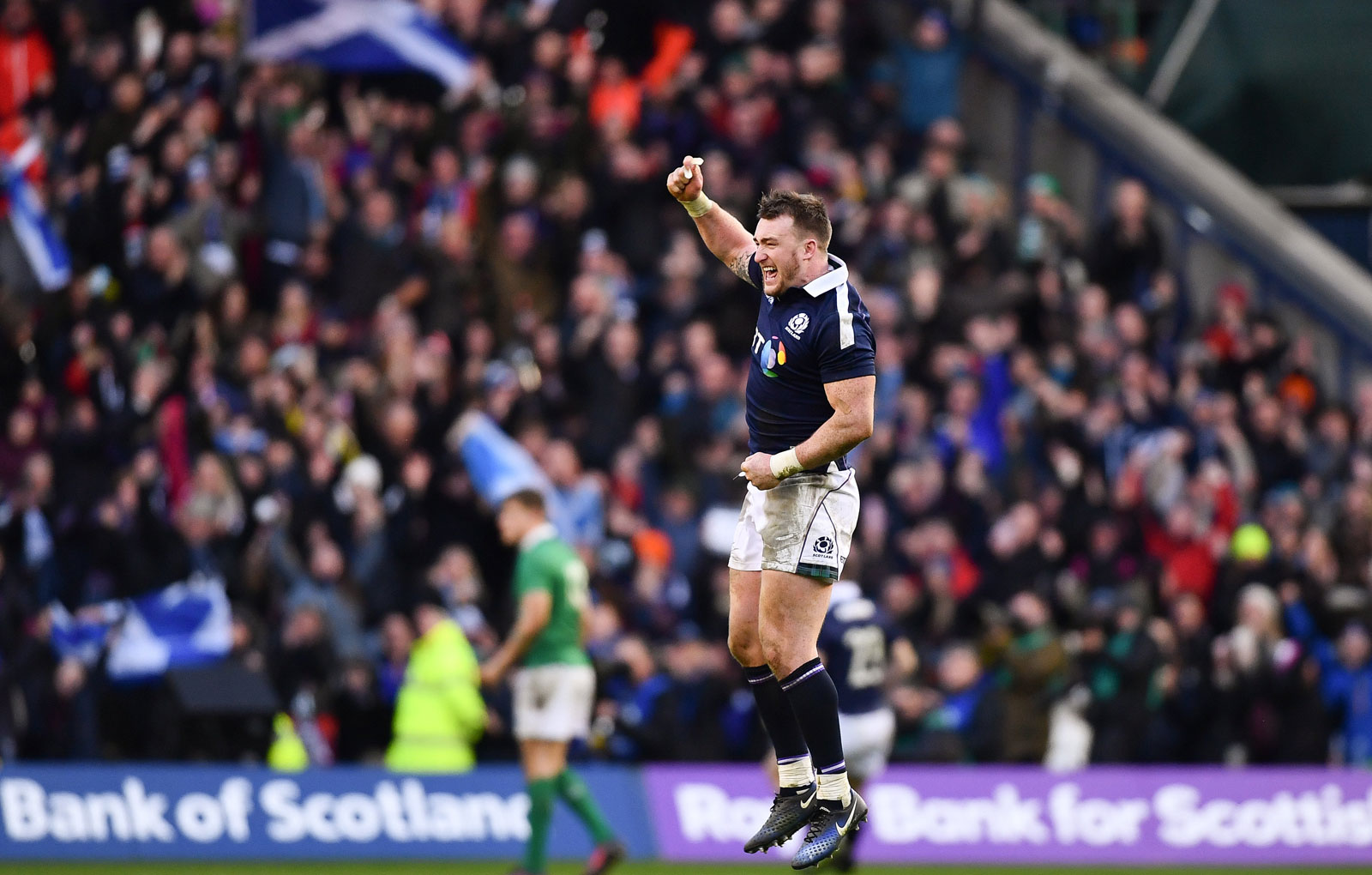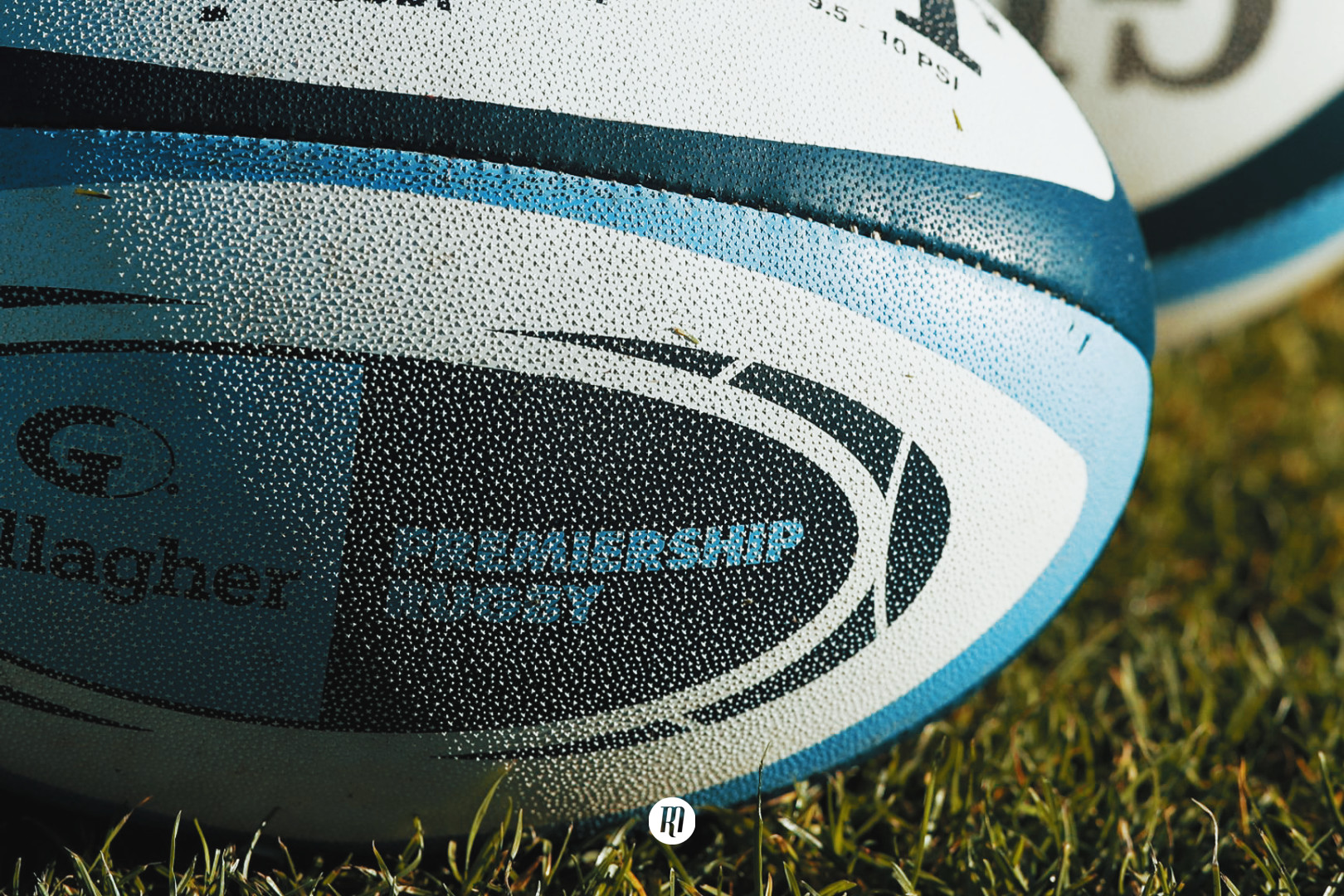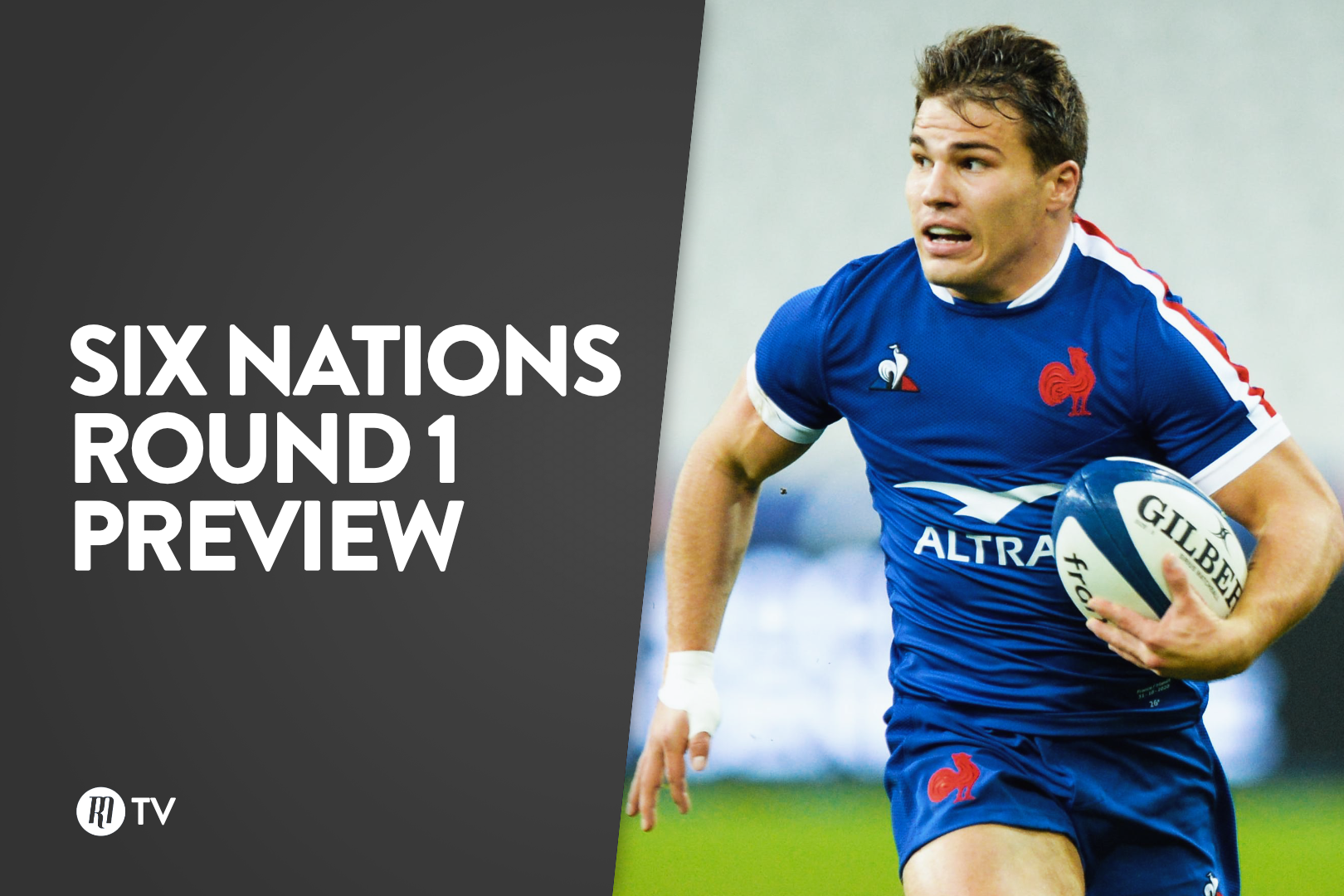Match Analysis: Scotland v Ireland
A great display of defensive resilience and counter-attacking rugby brought Scotland their first opening day victory in the competition for over 10 years. Capitalising on their strengths and Ireland's weaknesses, they were able to deliver a win that many in Scotland will feel has been a long time coming.
Scotland will be delighted to have overcome Ireland in what the score line suggests was a close game. Strong Scottish defence and counter-attacking rugby kept Ireland at bay and ultimately the first 30 minutes won the game for Scotland.
Scotland Team Selection
No real surprises, with a strong spine through the side, starting in the front row with the young Zander Fagerson, the Gray brothers in the second row, ball carrier Josh Strauss at 8, Laidlaw at 9, Finn Russell at 10, Dunbar and Jones in the midfield and Stuart Hogg at fullback.
Scotland have been coming close over the last few years and there has been a growing sense of optimism about what they can achieve in the competition. Their aim would be to play a fast and loose game, aiming to exploit Ireland in the wide areas and doing their best to challenge up front.
Ireland Team Selection
Predictions had the game down as a tight one, but one of the differentiating factors would have been Jonny Sexton; he was ruled out of the game and replaced by Paddy Jackson. Ireland otherwise went into the game with a strong side. Despite falling short of expectation in last years championship, they went on to have a strong 2016 and would have been be hoping to get their campaign on track with a solid victory here at Murrayfield.
Match Overview
Scotland had only ever won their opening game of the Six Nations once, and they would be looking to break that duck against an Ireland side that are still showing continuing signs of improvement, not least their victory over the All Blacks last year.
An exciting aspect of the game would undoubtedly be the collision of coaching styles, with Joe Schmidt renowned for his highly structured approach, and Vern Cotter allowing a lot of creative freedom to his back line, not least Finn Russell who would be looking to pull the strings in the Scotland midfield.
In fact, it was a calculated Scotland game plan that effectively won the game in the first 30 minutes. Ireland maintained a stranglehold on the game for the majority, but Scotland’s defence stood firm to ensure they delivered their first opening day victory in the Six Nations championship since 2006.
Forward Battle
Throughout the game it was clear that Ireland had the ascendancy in the forwards, exerting their dominance in the scrum early on and winning the battle at the breakdown, just as one has come to expect from them. Scotland showed an improved performance in the scrum in the second half, but Ireland’s stranglehold on other areas of the game meant this had little impact by the time they had caught up.
You could see from Scotland’s early game plan however, they accepted this was a place they would lose out in, and so didn’t overcommit at the break down and allowed Ireland to work through the phases in the forwards. They kept the Irish attack tight and shutdown their options; Ireland looked remarkably impotent in the first half.
Defensive Setup
Scotland’s line speed in defence put the Irish forwards under a lot of pressure. It was clear that their game plan was to commit as few players to the breakdown as possible, spoil quick ball and keep the Irish attack in tight. Funnily enough, this is a page straight out of the Irish defensive handbook. It worked; Ireland looked stale. While they controlled the ball and went through up to 20 phases at times, they never looked like they were going to break the gain line and make an impact on the game.
As I mentioned, Ireland defensively had a very similar shape, but it was clear that Scotland’s game plan was to exploit them in the wide areas where they are vulnerable.
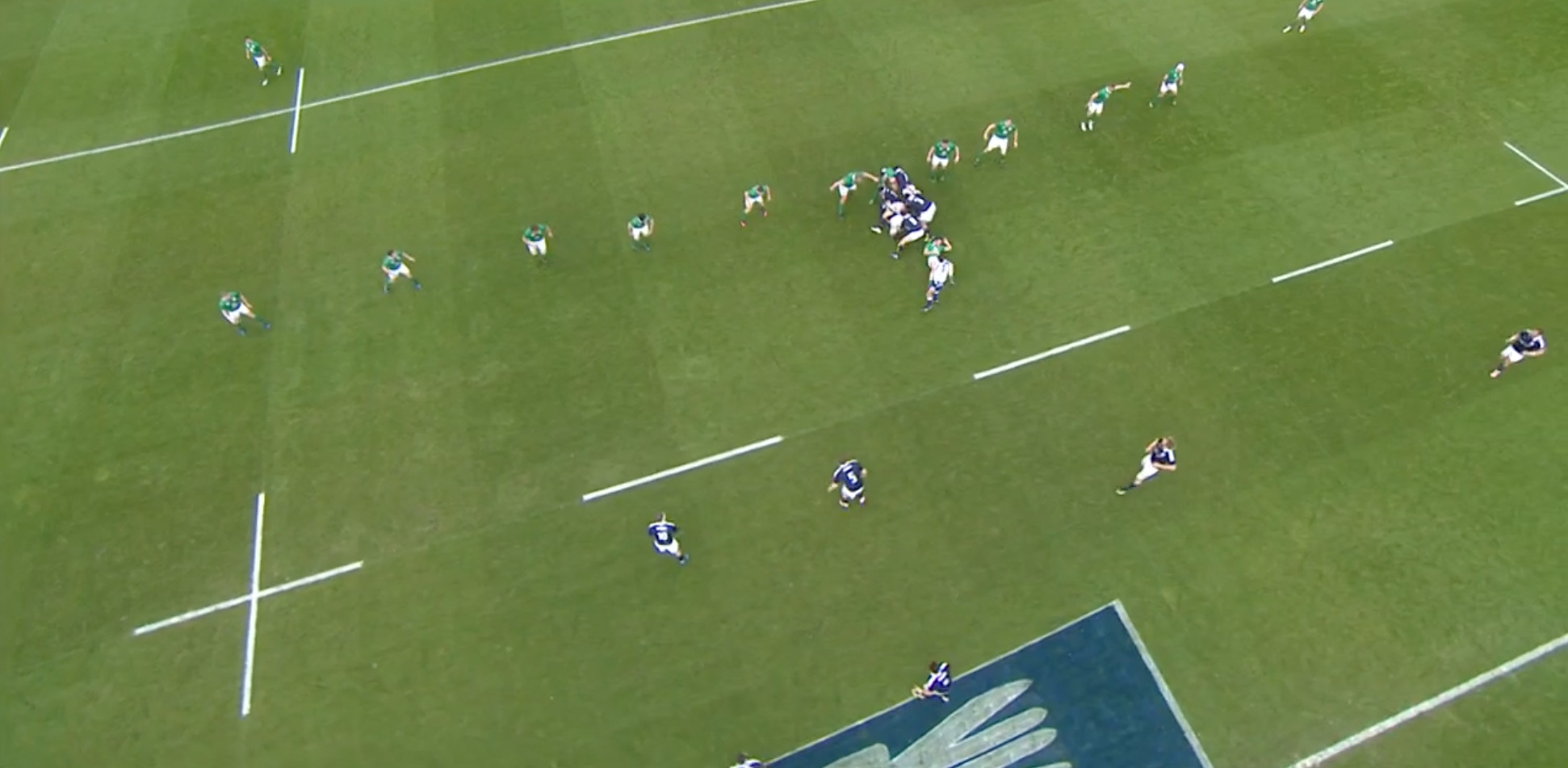
The image above highlights this perfectly. This is moments before Stuart Hogg goes over for his second try of the game. Scotland have a ruck in the middle of the field, Ireland are balanced in their defence on either side, but are keeping in tight, focusing on quick line speed to force Scotland back inside. You can see the space this leaves in the wide areas of the field. This isn’t a problem when the attacking pace is slow, you can get up in the face of the opposition before they get the opportunity to work the ball into this area.
In this instance, Sean Maitland and Stuart Hogg are already occupying the wide channel; if Finn Russell can release the ball wide quickly, bypassing Ireland’s tight defence, he can open up a two on one for Hogg and Maitland against Rob Kearney. The image below shows Hogg and Maitland positioned in the wide channel as Hogg receives the ball, creating the two on one against Kearney.
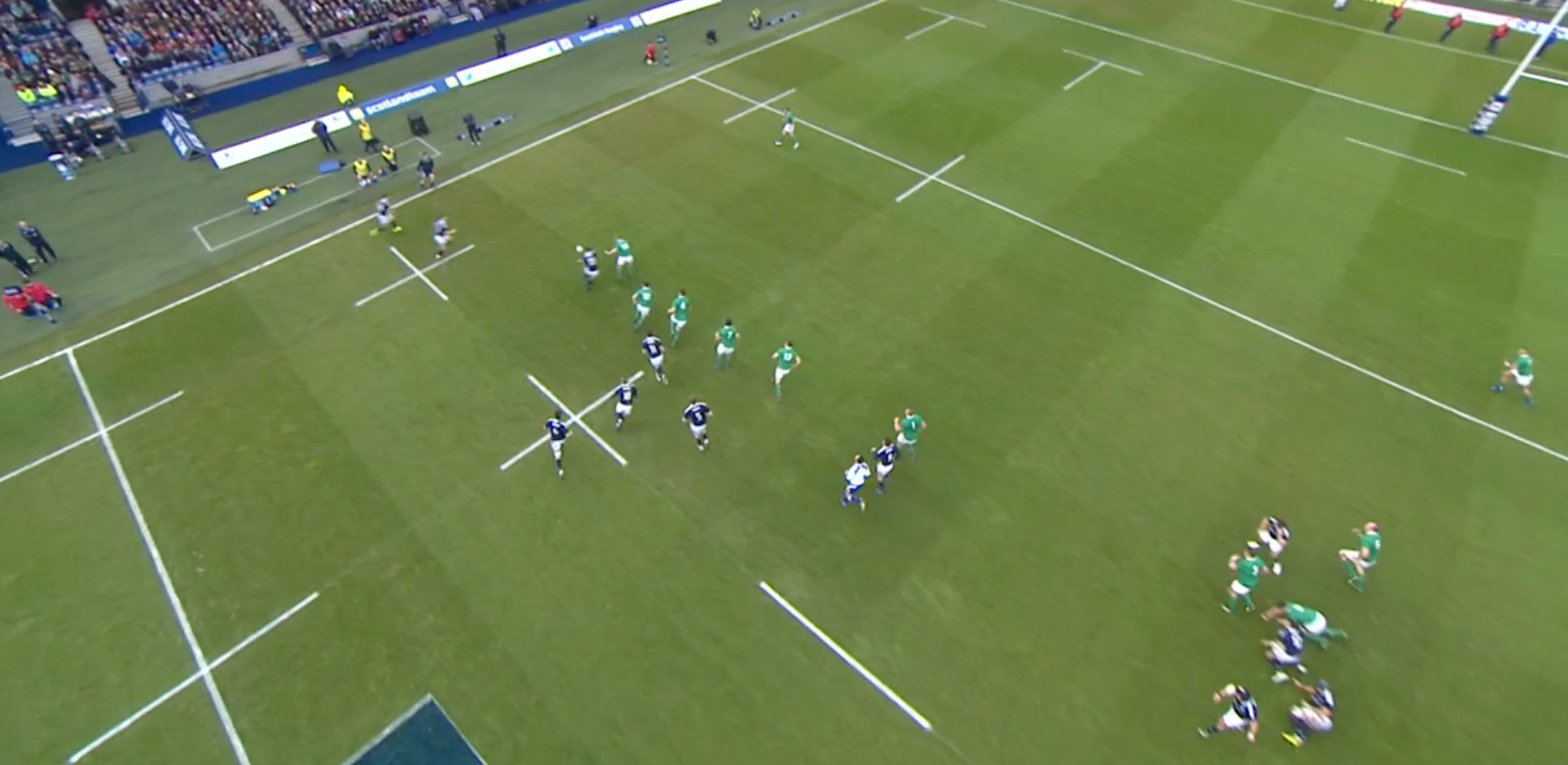
Scotland Counter Attacking
Ireland under Joe Schmidt defend high up the field, and this was reflected in the tiny amount of time that Scotland spent in the Irish 22 throughout the game. However, Scotland’s counter-attacking game plan ensured that, having allowed Ireland time on the ball, they could pounce on any mistakes. Indeed they played to their strengths and Ireland’s weaknesses; Ireland leave space on the outside of their defence and Scotland have the backs to exploit it.
On balance, leaving the space on the outside is a calculated risk; yes you will concede ground in this area, but if you can get your tight rush defence up in opposition faces, chances are you can win the ball back and turn that pressure into points. Ireland proved their game plan, going ahead late on the game, but ultimately the risk did not pay off.
Scotland played with a high intensity, and kept the game fast and loose, pushing the ball wide at the earliest opportunity, and this resulted in the two early and decisive tries for Stuart Hogg.
Scottish Ingenuity
Scotland scored their third try on the 28 minute mark with another play straight out of the Irish text book. Joe Schmidt’s sides are known for ‘Painting Pictures’ and exploiting the space created by players off the ball. Having just conceded a Keith Earls try after a sustained period of Irish dominance, Scotland kicked off, and a mistake from Connor Murray and Rob Kearney meant Scotland won the ball back. After working through the phases, Finn Russell put a grubber into the corner which was carried into touch by Simon Zebo.
At the line-out, Greig Laidlaw, Tommy Seymour and Alex Dunbar lined up at the front, with Scotland’s go to jumpers at the back of the line out; picture painted. In this instance, Ireland are going to anticipate a catch and drive, with the backs providing some extra weight so close to the try line.
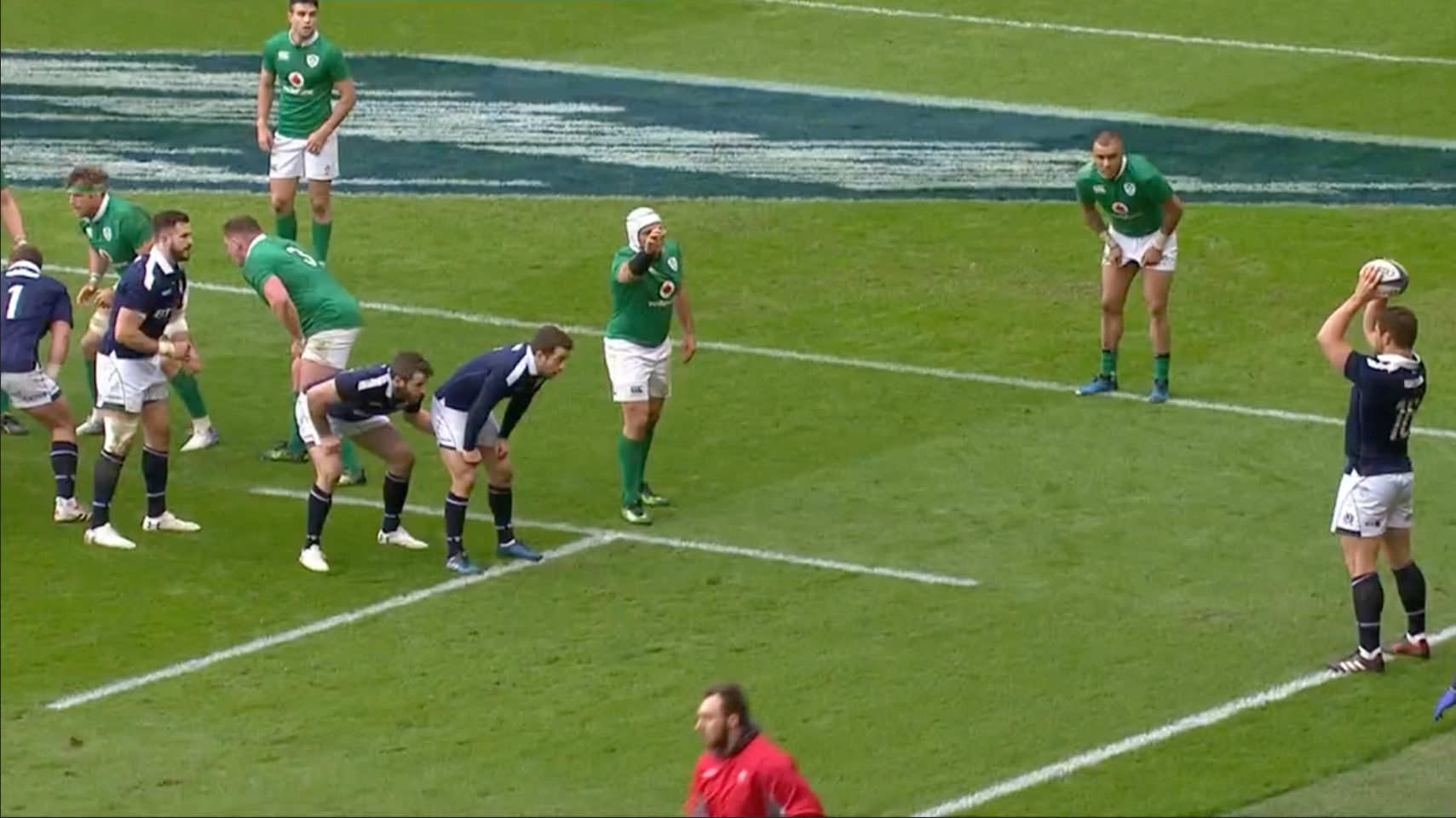
This is reflected in the positions and body directions of the Irish forwards, who are clearly expecting one of the forwards in the middle to receive the ball. Rory Best provides some token opposition at the front of the line out, but Tadhg Furlong is drawn towards the perceived threat, leaving a space of a metre or so behind him. This is the gap that Alex Dunbar receives the ball in before crashing over the try line.
Scotland went into the break leading twenty-one points to eight.
Irish Resurgence
Once back on the field after the half time break, it was clear that Ireland had upped their intensity. In true Joe Schmidt fashion, Ireland stuck to the same game plan as the first half, trusting in their coaches strategy. It was clear that the game plan had worked in the first half, despite the score; they continued the same pattern of moving the ball up in the midfield with the forwards, edging towards the try line, going through up to twenty phases, but combined this with more offloads in the tackle with the aim of opening the game up. They were rewarded with a try from Iain Henderson in the 48th minute.
As the hour mark approached and players were tiring, spaces started to appear and Ireland were moving forward with much greater purpose. Scotland’s lead was beginning to look very fragile, and indeed it was surpassed by Paddy Jackson’s converted try shortly after the hour after a sustained period of Irish pressure.
By 70 minutes, Ireland were playing for position more, keeping Scotland pinned back in their own half to ensure their lead did not slip, but just as Ireland had stuck to their game plan, so did Scotland, continuing to rip through the wide areas. This was rewarded with a foray into the Ireland half after a sustained period of Irish pressure. After an infringement at the breakdown, Laidlaw duly delivered three points and returned the lead to Scotland.
Ireland continued to stick to their game plan, and, but for some heroic Scottish defence and Irish mistakes, might have put themselves back in front. As the game was closing, Scotland went wide again, and a high tackle on Alex Dunbar by Tommy Bowe brought a penalty.
Scotland then made the decision not to take the three points but to kick for the corner, perhaps the first decision influenced by the new bonus point rules. While a try did not come from the resulting line out, Scotland did win a penalty for an infringement at the breakdown. Greig Laidlaw showed his experience in this position, ensuring the decision to take the kick took the clock over the 79 minute mark, which given that he has one minute to take the kick ensured that once the ball had reached its destination, the game would be over and Scotland would have their victory.
Conclusion
Scotland will be delighted with their smash-and-grab victory given Ireland’s dominance in this fixture, especially when Ireland had the momentum in the final stages of the game. Joe Schmidt can feel vindicated with his game plan, which clearly worked, but the counter-attacking strategy that Scotland employed proved successful enough in the opening 30 minutes to deliver them the win.
Defensively, Scotland were resolute throughout the game, for the most part keeping Ireland impotent as they moved forward. Going forward, Scotland’s ability to get into the wide areas where Ireland were so vulnerable defined the course of the game.
History was also made, with Ireland winning the first bonus point in the competition, but they will certainly be keen to focus on next week when they visit Italy at the Stadio Olimpico.
Scotland go to the Stade de France full of confidence after a victory that has firmly established them as one of the teams to beat this year.

Filed under:
Six Nations, Match Analysis, Tactics Handbook, Ireland, Scotland
Written by: Edward Kerr
Follow: @edwardrkerr · @therugbymag
